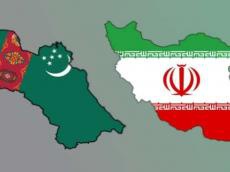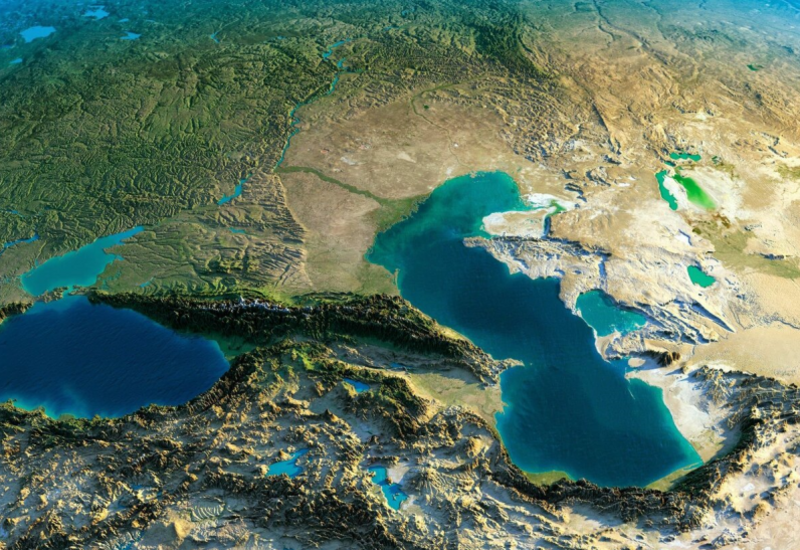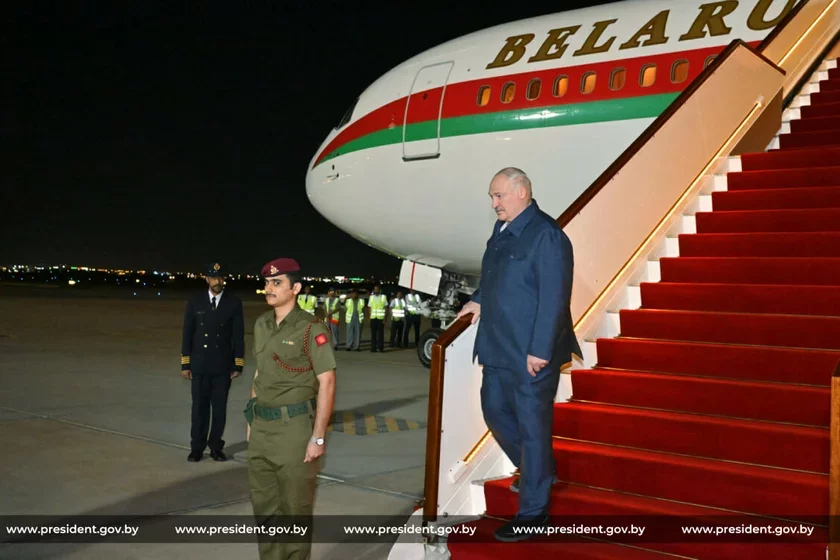|
|
TODAY.AZ / Analytics
Turkmen gas delivery through Iran – reality or possibility?
16 March 2015 [14:00] - TODAY.AZ

/By AzerNews/
By Sara Rajabova
The gas rally which was launched in an effort to weaken Russia's hegemony seems to have opened up new markets with new players.
The energy-producing countries are in a rush to occupy their own place in the new market which seems to have pushed out the world’s giant energy producer Russia.
Turkmenistan, the world's fourth for natural gas recourses, seeks to fill one of the vacant seats in this emerging potential energy market. After Russia’s refusal to buy Turkmen gas and in view of diversifying its gas exports, the energy rich country is eyeing up new markets.
Recently, discussions on the delivery of Turkmen gas to Europe, which is heavily dependent on energy imports, has heated up.
Now Turkmenistan is viewing pipelines which will help its natural resources to achieve the desired destinations. The Southern Gas Corridor designed to bring Caspian gas to energy-hungry Europe is quite a perspective for the gas-rich country, although it will require additional decisions over a sub-pipeline. It could either pass through Iran’s territory, or the Caspian Sea, which is called the Trans-Caspian gas pipeline project.
Iran, which has been isolated by Western sanctions over its nuclear energy program, has proposed Turkmenistan to study the possibility of transiting gas to other countries through its territory.
This issue was one of the main issues of discussion during Iranian President Hassan Rouhani’s visit to Turkmenistan in mid-March.
“Rouhani brought this up during his trip to Turkmenistan saying the two countries should study the possibility of shipping Turkmen gas through Iran to other countries. Those “other” countries are presumably Turkey and European countries,” Bruce Pannier, an expert on Central Asia and Senior Correspondent at Radio Free Europe/Radio Liberty told AzerNews.
However, he said such a plan is currently impossible since international sanctions on Iran over the country’s nuclear program have create too many obstacles for the construction of a gas pipeline or pipelines across northern Iran into Turkey.
Pannier also added that Iranian officials, including President Rouhani, seem confident a final deal is near with the 5+1 group and that the sanctions will soon be eased.
“Turkmenistan would surely be glad to export to Europe, especially since the country has limited export possibilities currently. Russia cut back drastically on the amount of Turkmen gas it purchases, Iran does not buy so much Turkmen gas and that leaves China as Turkmenistan’s only reliable purchaser of gas,” he said.
He added that it is very bad to be dependent on one customer, as it is hard to bargain.
Turkmenistan currently has three gas export routes with China, accounting for 52 percent of the country’s demand, Iran and Russia. The most important route is the China-Central Asian pipeline that is expected to supply more than 40 percent of China’s gas demand by 2020.
However, the possibility of a new competitive project on supplying China with Russian gas urges the Turkmen government to search for new markets. According to reports, China has agreed to build the “Power of Siberia” pipeline from Eastern Siberia to China.
Another project to diversify the Turkmen exports is the Turkmenistan-Afghanistan-Pakistan-India pipeline (TAPI), a plan supported by the United States aimed to sideline Iran from regional cooperation.
Pannier, however, considered that “TAPI is a possibility but that realistically it will take several years, maybe many years before the security in Afghanistan, and in southern Pakistan, is stable enough to allow the construction of that pipeline.”
He further noted that Iran’s greatest problem in allowing transit of Turkmen gas will be Tehran’s relationship with Moscow.
“Russia has been a valuable ally during these years of international sanctions and Moscow has played a large part in ensuring the sanctions on Iran were not worse than they are. Russian-Iranian trade is increasing, Russia built Iran’s first nuclear power plant at Bushehr and Rosatom is preparing to construct several more reactors in Iran,” Pannier said.
He stressed that Iran’s participation in shipments of gas from the Caspian Basin to Europe would be part of the European Union’s Southern Gas Corridor project and that project is designed to cut Europe’s dependence on Russian gas supplies.
“Iran, with its own enormous gas reserves, would undoubtedly want to export its gas to Europe also. And the more Iranian and Turkmen gas Europe buys, the less Russian gas Europe will need,” Pannier said.
On the other hand, Turkmen gas could be delivered to Turkey and other energy-dependent countries through Iran's territory with the development of existing pipelines.
Therefore, strengthening cooperation between them could be profitable for both countries: Turkmenistan could take benefit from new gas exports and Iran as a transit country.
Besides, Iran is one of three buyers of Turkmen gas.
“Tehran and Ashgabat have always been on fairly good terms. Turkmenistan and Iran are neighbors but more important for Iran is that Turkmenistan, as a UN-recognized neutral country, does not get involved in all the international politics surrounding Iran,” Pannier said.
He added they are connected by two gas pipelines and President Rouhani voiced his country's intention to increase gas imports from Turkmenistan.
“It is unclear how much gas Iran has been importing lately but with both the older and newer pipelines operating at full capacity Turkmenistan could export some 16 bcm of gas to Iran. Current estimates of how much gas Turkmenistan is sending are somewhere between 6 bcm and 8 bcm annually,” Pannier said.
The second branch of the gas pipeline for the Turkmen natural gas supplies to Iran has been built in recent years. Industry analysts predicted that this would double Turkmenistan’s exports to Iran.
However, gas cooperation of the two neighbors has not always gone smoothly. The two countries have had disagreements in the past, when Turkmenistan cut gas exports to Iran. Ashgabat delayed gas deliveries in 2012, due to Iran’s $1 billion debt to Turkmenistan as a result of western sanctions on the Islamic Republic’s banking sector. But Ashgabat and Tehran have always managed to sort out their differences.
Many joint projects were implemented during the long-term cooperation between Iran and Turkmenistan.
A direct rail connection of Kazakhstan, Turkmenistan and Iran has been opened through the east of the Caspian Sea in 2014 that is expected to carry transit traffic between Central Asia and the Persian Gulf.
It is expected that the line will boost rail traffic between the three countries from 3 million tonnes a year to 10 million, with the figure expected to reach 20 million tonnes by 2020.
During President Rouhani’s Turkmenistan visit, the sides voiced an intention to increase the trade turnover up to $60 billion over the next 10 years.
“The new railroad connecting Kazakhstan, Turkmenistan, and Iran just opened and once it is operating smoothly it should increase trade between the three countries substantially. Rouhani and Turkmen President Gurbanguly Berdymukhammedov called for boosting bilateral trade to $60 billion. That is probably a bit optimistic but the new railway line will bring Iran and Turkmenistan closer,” Pannier said.
He said there is already an older railway line connecting the two countries further east – the Tejen-Sarakhs-Meshhad line, however noting that the railway line has not made a huge difference in Iranian-Turkmen ties despite high hopes when it started working in 1996.
“So I would say Iran and Turkmenistan are likely to have many relations in the years to come,” Pannier said.
URL: http://www.today.az/news/analytics/139235.html
 Print version
Print version
Connect with us. Get latest news and updates.
See Also
- 03 December 2025 [19:50]
Baku’s strategic patience ends Minsk Group era, rewrites regional power dynamics - 01 December 2025 [13:58]
Baku positions itself as regional digital hub through WTDC-25 - 29 November 2025 [08:30]
Banking sector strengthens as capital, credit and digitalization advance - 28 November 2025 [08:30]
President Aliyev places industry and innovation at centre of economic reform - 26 November 2025 [08:30]
Caspian energy faces turning point as Azerbaijan sets course beyond oil dependence - 25 November 2025 [08:30]
World Bank study highlights path for Azerbaijan’s shift to non-oil economy - 23 November 2025 [16:19]
Armenia faces its moment of truth on constitutional reform - 22 November 2025 [20:15]
Why Trump’s proposal deserves more sober assessment - 22 November 2025 [08:30]
COP29 achieves worldwide recognition for its breakthrough climate outcomes - 21 November 2025 [17:16]
Azerbaijan strengthens multilateral engagement as Baku hosts D-8 Media Forum
Most Popular
 The Trans-Caspian gas pipeline is coming back: and who will pay?
The Trans-Caspian gas pipeline is coming back: and who will pay?
 Azerbaijan, China central banks explore closer cooperation
Azerbaijan, China central banks explore closer cooperation
 Homecoming: five years since the liberation of the Lachin district
Homecoming: five years since the liberation of the Lachin district
 OSCE officially closes Minsk process following joint appeal by Azerbaijan and Armenia
OSCE officially closes Minsk process following joint appeal by Azerbaijan and Armenia
 Lukashenko’s low-profile Oman trip fuels disappearance rumors
Lukashenko’s low-profile Oman trip fuels disappearance rumors
 Azerbaijan, Uzbekistan forge partnership for education and research
Azerbaijan, Uzbekistan forge partnership for education and research
 Baku to host int'l conference on 'Developing Artificial Intelligence Index in Islamic World'
Baku to host int'l conference on 'Developing Artificial Intelligence Index in Islamic World'
